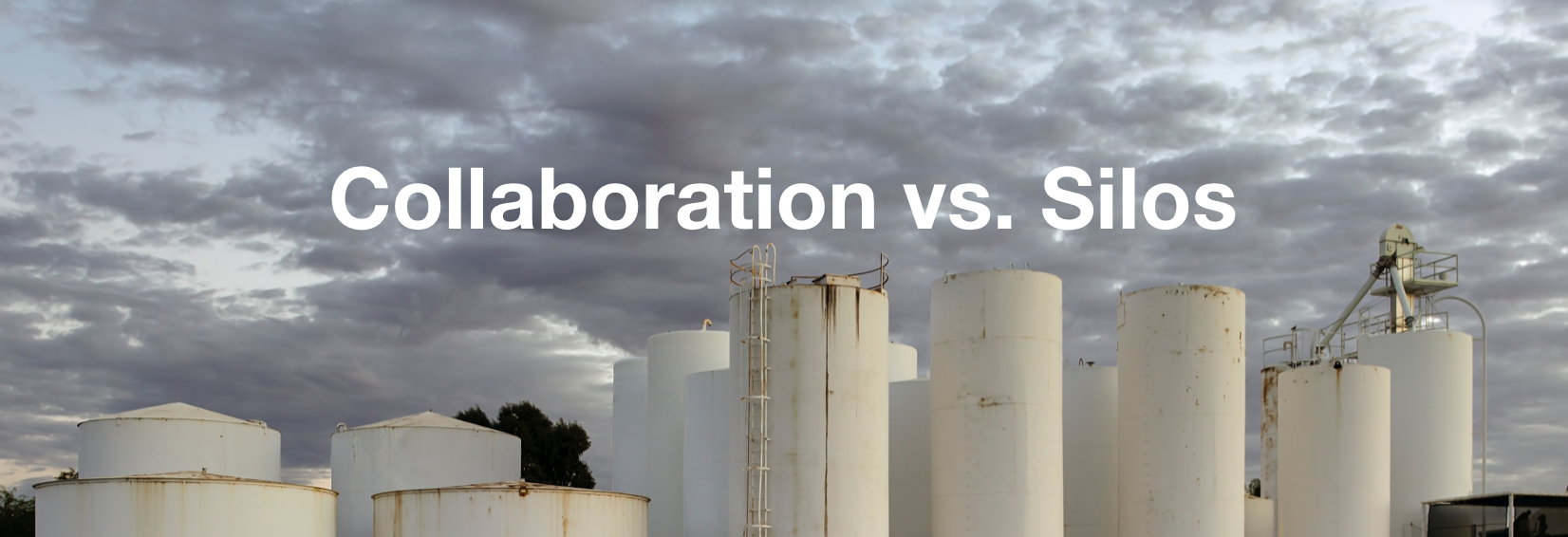How can you improve the collaboration in your organisation, and what is holding you back?
One of them is, the mere existence of the classic org chart.
And why is that?

After all, an org chart gives a nice overview of the responsibilities and span-of-control across an organisation? You would think that this creates clarity in who will do what?
The reality is that departments become silos, and siloes decrease trust and efficiency in an organisation.
I grew up in Belgium, in a province that had more pigs than people (no joke, and I am talking about the animals, not the people behaving as pigs). Across the province, pigsties occupied the view. Besides the pigsties, you always had a number silos, which were used to store the food for the animals.
Silos are tall, narrow towers, with very few access possibilities. There is a narrow hole to fill the silo and then to unload them, but for the rest, there is no other way for the food to get out.
And it is the same with siloed organisations. Very often, there is only limited cooperation between the different departments, except from the top down. Information, and more importantly, knowledge, aren’t shared across the organisation.
This leads to decreased efficiency, and even to distrust and as such a damaged corporate culture.
Freek Vermeulen, Associate Professor of Strategy and Entrepreneurship at the London Business school says: “Over time, informal networks start to mirror the formal structure, which is how silos develop.” So how can we prevent silo thinking, and break through the petrification of organisations?
How can we avoid silos, and at the same time create an open environment, that helps communication, collaboration and innovation?
I saw Freek a few years ago at the HR Leadership Summit in Dublin, and deconstructing silos is straightforward.
What you do is you change the setup of the organisation regularly. For example, a company whose original setup was based on functional departments will see informal networks (aka friendships) developing inside these functional departments.
By moving into multifunctional departments, like into PODs, or geographical units, those informal networks will in general remain, and new informal networks are being built.
Thanks to those existing informal networks, a layer of trust exists which would otherwise not have existed, resulting in more openness and chances for cross departmental collaboration, which in turn, reinforces innovation and increases efficiency, and thus performance.
There is more research that supports this.
In the seventies, Thomas J. Allen found out that there is a strong negative correlation between the distance of coworkers and the amount of communication they have with each other.
This strong negative correlation became known as The Allen curve, and shows the exponential drop in frequency of communication between engineers as the distance between them increases, even within the same company.
This became the basis for company design in which reshuffling orgs claimed to more collaboration and creativity.
Nikolas Vandelanotte, partner at Vandelanotte a top accountancy and advisory in Belgium cannot agree more. While they have areas of expertise, this shouldn’t impede collaboration, and so “every 6 months, we relocate our teams to other parts in our offices.”
This reduces a siloed mentality, and leads to innovation. As Vandelanotte continues “as a result, people that have barely or not been in contact, start talking to each other, and this often leads to innovative ideas.”
What are you doing to reduce silos and increase collaboration?
Thanks for reading, and as always, keep jumping the waves of disruption!
